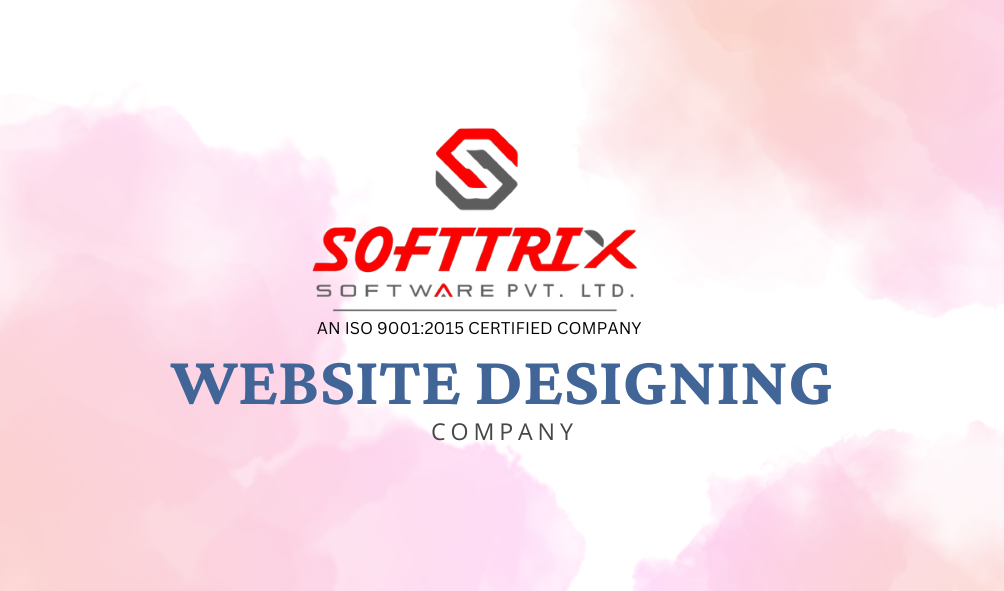
Best Software developing company in lucknow
Softtrix Software knows Website design is more than just
creating a good-looking Website; it's about crafting a meaningful and engaging
experience for users. It’s the art and science of blending aesthetics, functionality,
and user experience into a cohesive digital environment that speaks to the
audience.
1. The Essence of Website Design
At its heart, Website design is about communication. A Website
acts as a bridge between a brand and its audience. It conveys messages,
showcases products, and provides valuable information. The goal is to create a
user-friendly platform where visitors feel welcomed and informed—whether they
are searching for a product, looking for services, or just exploring.
2. The Aesthetics
Visual Appeal: The first impression matters. A
visually appealing Website can captivate visitors immediately. This includes
the use of colors, typography, images, and layout to create a harmonious and
inviting design.
Color Psychology: Colors evoke emotions. A soft blue
might convey calmness and professionalism, while a vibrant orange may ignite
enthusiasm and creativity. Choosing the right color palette can significantly
influence how visitors feel about the brand.
Typography: Fonts do more than convey text; they also
set the tone. A playful font can suggest creativity, while a clean, sans-serif
typeface may speak to professionalism and clarity. The key is to ensure that
the text is readable and conveys the brand’s personality.
Imagery: High-quality images make a Website more
relatable. Whether it’s photographs, illustrations, or icons, visuals should
resonate with the audience's experiences and aspirations, making them feel
connected to the brand.
3. User Experience
User experience is a critical component of Website design.
It involves understanding how visitors interact with the Website and ensuring
that their journey is smooth and intuitive.
Intuitive Navigation: Users should find what they are
looking for without frustration. A well-structured navigation bar and clear
labels help guide them effortlessly through the site, making the experience
enjoyable.
Accessibility: A great design considers everyone,
including those with disabilities. Using alternative text for images, providing
keyboard navigation, and ensuring color contrast are vitally important to make
the Website inclusive for all users.
Load Time: Patience is limited. A fast-loading Website
creates a positive impression, while slow load times can lead to frustration.
Optimizing images and minimizing large files ensures users don’t leave before
they even see what the site has to offer.
4. Content Matters
Content is the foundation of any Website. It’s not just what
is said, but how it’s presented that matters.
Clarity and Relevance: Information must be presented
clearly and concisely. Visitors appreciate straight-to-the-point communication
that answers their questions and meets their needs.
Calls to Action (CTAs): Encouraging users to take
action is vital. and the placement, wording, and design of CTAs can
significantly influence user engagement. Effective CTAs guide users on the next
steps—whether it’s signing up, making a purchase, or contacting the company.
5. The Technical Backbone
Behind the beauty of Website design is a robust technical
framework that ensures everything functions smoothly.
Responsive Design: With the rise of mobile browsing,
responsive design ensures that Website adapt seamlessly to different screen
sizes. This flexibility enhances user experience and caters to a broader
audience.
Search Engine Optimization (SEO): Designing with SEO
in mind helps increase visibility in search engines, guiding more visitors to
the site. Using relevant keywords, optimizing meta tags, and structuring
content effectively are essential strategies.
Security: In an age where data breaches are rampant,
a secure Website builds trust. Implementing SSL certificates, secure payment
gateways, and regular security audits safeguard user information and create
peace of mind.
6. Continuous Improvement
Website design doesn’t stop at launch; it’s an ongoing
journey.
User Feedback: Gathering feedback helps identify
areas for improvement. Listening to what users enjoy and what they find
confusing allows designers to make informed updates.
Analytics: Utilizing analytics tools provides insight
into user behavior. Understanding which pages perform well, where users drop
off, and how they interact with content informs continuous enhancement of the Website.
Contact Us
Contact: info@softtrixsoftware.com - Website: [www.softtrixsoftware.com]
- Phone: +917905771264, +917081073425, +918601045452, +916386568014. The Website
SofttrixSoftware.com
Conclusion
Website design plays a crucial role in how we interact with
the digital world. It's about creating an experience where aesthetics meet
functionality, allowing users to connect deeply with a brand. A thoughtfully
designed Website not only attracts visitors but also retains them, elevating
their experience and ultimately building lasting relationships..
